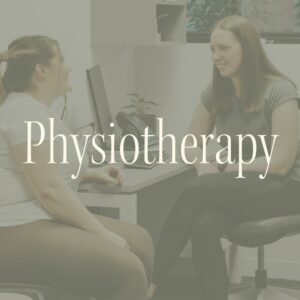This week (March 1-7) is endometriosis awareness week and March is international endometriosis month. This month is all about raising awareness and supporting those with endometriosis (#EndometriosisAwarenessMonth). Research estimates that 1 in 10 people with a uterus have endometriosis (Zondervan, 2020). Endometriosis frequently presents with the symptom of pain including painful periods (dysmenorrhoea), pain during sexual intercourse (dyspareunia), pain with bowel movements and chronic pelvic/ lower back or abdominal pain (Coxon, 2018). However, symptoms of endometriosis can be very different for each person.
Endometriosis is an inflammatory condition where endometrial tissue (tissue similar to the lining of the uterus) grows outside of the uterus. Endometriosis can be a complex condition with pain often being one of the main symptoms. Scientific research indicates that endometriosis is fueled by elevated levels of oestrogen; however, there is currently no known cause for the associated tissue growth.
What are the treatment options?
Treatment and management for endometriosis is multidisciplinary including but not limited to medical/ gynaecology management, hormonal therapy, dietetics, psychology and physiotherapy. Physiotherapy can help manage the chronic pain associated with endometriosis. The recent Australian clinical guidelines for the treatment of endometriosis recognises physiotherapy as a promising option for improving pelvic pain (RANZCOG, 2021). Your physiotherapist may use a combination of exercise therapy, education and manual therapy to help manage your pain.
Exercise is one evidence-based option that can help manage endometriosis symptoms and strongly recommended in clinical guidelines (RANZCOG, 2021). There are many benefits of exercise for endometriosis management including:
- Exercise can act as an analgesic and release natural pain relief in our body that can help decrease pain. One recent RCT showed that women who
completed regular yoga for two months had reduced levels of pain associated with endometriosis (Goncalves, 2017). - Exercise can help improve mobility and decrease cramping. Exercise, such as Pilates which focuses on full range of motion of the muscles of the pelvis, hips and abdomen can improve relaxation of this area.
- Exercise can help decrease the inflammatory effect of endometriosis by increasing anti-inflammatory markers in the body.
- Exercise helps improve fatigue and brain fog. One Swiss study found that women with endometriosis experience fatigue at twice the rate of women without endometriosis (Ramin-Wright, 2018). Exercise has been shown to help manage fatigue symptoms and is also used in the management of chronic pain conditions, such as fibromyalgia.
- Exercise has proven benefits for digestion and bowel health which can be common during an endometriosis flare-up.
How to choose an exercise?
Currently, there are no specific guidelines surrounding exercise prescription for individuals and exercise selection will depend on the individual person and their symptoms. Your physiotherapist is skilled to help you create an exercise plan of the appropriate intensity and type.
At BalanceNorth, we pride ourselves in our holistic approach to care, which is very important in endometriosis management. If you have endometriosis and would like to discuss physiotherapy treatment options, feel free to book in with one of our physiotherapists via our BOOK NOW page.
References
● Arion A, Orr N, Allaire C et al. A quantitative analysis of sleep quality in women with endometriosis. Journal of Women’s Health. https://doi.org/10.1089/jwh.2019.8008
● Coxon, L., Horne, A. W., & Vincent, K. (2018). Pathophysiology of endometriosis-associated pain: A review of pelvic and central nervous system
mechanisms. Best Practice & Research Clinical Obstetrics & Gynaecology, 51, 53-67.
● Goncalves, A., Barron, N., & Bahamondes, L. (2017). The practice of hatha yoga for the treatment of pain associated with endometriosis. Journal of alternate and complementary medicine, 23(1):45-52.
● Ramin-Wright, A., Schwartz, A. S. K., Geraedts, K., Rauchfuss, M., Wölfler, M. M., Haeberlin, F., … & Leeners, B. (2018). Fatigue–a symptom in endometriosis. Human reproduction, 33(8), 1459-1465.
● Royal Australian and New Zealand College of Obstetricians and Gynaecologists. Australian clinical practice guideline for the diagnosis and management of endometriosis. RANZCOG; 2021:58.
● Zondervan, Krina D.Phil.,Christian M. Becker, M.D, and Stacey A. Missmer, Sc.D. (2020), ‘Endometriosis”



